Nutritional Foundations- Making the best of the regular grocery store (Inner Aisles)
After touring the exterior of the conventional grocery store, which is really the best way to stick to a whole foods diet (that is, buying your food from the outer edges, rather than from the inner aisles), it's time to move on and brave those pesky inner aisles we've been working our way towards!
I'm going to weave through the aisles as they are in my local store, trying to hit up all of the major topics and food categories that I think might matter to you, or that I think are applicable. I'll make some comments on some good (and bad) buys, and let you know some of the items that I regularly purchase from these aisles as well.
Though I wish that I could take the time to explain everything that I'll be talking about in this post, it's just not feasible. This post is already long enough as it is! I'd love to give you the ins and outs and rationale behind every suggestion I'm making, but it would take me weeks (or months) to do it! If you have a specific question, please ask me and I'll do my best to answer!
As well, rather than becoming redundant throughout this post, just assume that everything I mention is better organic, if it's available to you. If not, then the suggestions I'm making are for whole foods that are as natural and unprocessed as possible. Let's get started, shall we?
Baking Supplies:
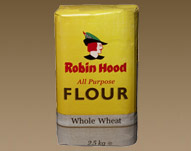
Flours– Some good options that are usually available are whole wheat, whole grain rye and sometimes oat or brown rice flour (if you can get spelt, kamut or barley, lucky you!). Unbleached is preferable to white, though still not ideal. There are some flours out there that claim to have all the fiber and nutrients of whole grain, but still taste like white (such as NutriFlour). Though these do have more fiber, they only contain the bran and not the germ, so please don't believe that they are as good as true whole wheat flour.- Leavening– When buying baking powder, be sure to look for one that is aluminum free. Baking soda is baking soda, so that's an easy one. As well, yeast could be an important ingredient if you will be baking your own bread. It's much cheaper to buy it bulk, not in the little packages, and be sure to store it in your fridge or freezer for best results.
- Nuts and seeds– Avoid the bulk bins, if at all possible. Though I love the concept of less packaging and cheaper prices with bulk, most nuts and seeds bought this way are already rancid by the time you bring them home. Stick with the ones in well-sealed packages.
- Dried fruits– Most store-bought dried fruits have sulphites in the ingredients, including raisins and dates. If you can find a brand without this chemical, fearlessly indulge in this tasty snack (but realize that dried fruits still have a very high fruit sugar content and shouldn't be eaten in excess)
Oils and Vinegars:
- For an excellent overview of the different types of oils and their uses, see Lindsay's posts, The World of Oils Part 1 and Part 2. Though I won't get into it, I don't recommend using canola, safflower, corn, or sunflower oil as your regular cooking or baking oil.
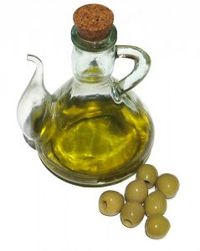
I buy my Extra Virgin Olive Oil from the grocery store in 3 L tins. It is best to buy oils in dark colored glass or in tins, as the more light that they are exposed to, the faster they go rancid. It is much more cost effective this way as well, and I simply pour a little bit at a time into a small glass bottle that I keep in the cupboard beside my stove.- I also do use just a bit of organic sunflower oil to make homemade mayo, as per the suggestion in Nourishing Traditions, but that's the only thing I use it for (because it is high in omega-6 fatty acids, and most of us consume too many already and need to tip the scale over towards the omega-3s) . I buy it at my grocery store, though most probably do not have organic.
- If coconut oil is available to you, looking for extra virgin or cold pressed, and organic if possible.
- Most stores now carry flax oil in their refrigerated section, near the yogurts. Make sure that it stays in your fridge, as it is a very heat sensitive oil. It cannot be used for cooking, though it can be good to use in salad dressings, smoothies, for dipping bread, etc.
- Rather than white vinegar for cooking (though it's great for cleaning!), use apple cider vinegar. Look for a brand that contains the "mother" (a cloudy sort of substance on the bottom), or one that is not filtered or pasteurized. Balsamic vinegar is so tasty, but use it very sparingly as it has sulphites in it. If you can find a brand without, enjoy!
Drinks:
- Avoid all artificially sweetened drinks! I can't stress this enough!
- Avoid sweetened juice drinks and "beverages" and cocktails. Honestly, they are more sugar water than anything, and really unnecessary.
- If you really enjoy having something besides water, a bit of 100% juice is an alright option. We buy it very occasionally, and really enjoy mixing it with club soda for a sparkling juice that is so much more refreshing and tasty than pop
- Herbal teas are one of the best choices for hot beverages- try chamomile, peppermint, ginger, fruit flavors, etc. Rooibos is a wonderful option for a stronger tea, naturally caffeine free, and also nice with cream and sweetener. Even better than the tea bags are loose teas, though I know that most stores don't carry them.
- If you like a drink with more kick, try a green or white tea (lots of antioxidants), an organic black tea (less caffeine than coffee), or a little bit of organic or fair trade coffee (most stores carry this now, though this should be kept to a minimum in our diets). If you'd prefer to avoid caffeine, please don't use a conventional decaf coffee. Look for a Swiss Water Process decaf, to avoid most of the nasty chemicals used to make decaf.
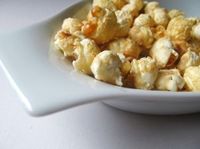
Treats and snacks:
- Honestly, there are few good options in these aisles. Most are just full of sugar, trans fats, artificial sweeteners, preservatives, colorings and more.
- A few that we will sometimes indulge in:
- organic tortilla chips (we try to stick to organic corn products, as corn is often GMO)
- Kettle Chips (one of the better chip brands- make sure to look for MSG in the ingredients)
- popcorn (popped at home, using real butter or coconut oil and sea salt, and personally, we like it with nutritional yeast- tastes a bit cheesy)
- Ice cream (I'll admit, we love it. We're learning to make our own and LOVE Kimi's coconut ice cream. But if you do buy it, we look for one that has real cream, not altered milk ingredients, and real sugar, nothing artificial, and a minimum of other additives). Rice Dream is also decent, with no added sugars except what is naturally occurring in the brown rice.
- Kids snacks– As I said above, most are sadly filled with just awful ingredients that I would never feed my kids. It would be much better to buy the ingredients to make your own homemade goodies, such as muffins, cookies, granola bars, applesauce, smoothies, etc. The dried fruit bars (like Sunripe) aren't too bad, as is unsulphured dried fruit, whole grain crackers or unsweetened, natural yogurt (flavor it yourself at home).
Canned Goods:
- Due to the information that has come out in the past year about BPA being found in canned foods (from the inner lining that is leaching into the food), I would suggest trying to avoid canned foods as much as possible. Besides the BPA, canned foods are also not nearly as nutritious as fresh or frozen produce, and quite often have added preservatives.
- Though I don't buy many items anymore, here's what I still buy:
- Tomatoes (diced, paste)- I get organic when I can, as a few of the organic brands don't have the BPA in the lining (though some do)
- Salmon– It makes quick and easy meals for us (salmon melts, on top of salads, etc.) and is a cost effective way to get in this fish which is full of good fats!
- Coconut milk (though I also buy creamed coconut in a box, to use in recipes where texture isn't as important- I get mine in my ethnic foods aisle). Check your coconut milk for preservatives, as they are in some brands.
Pasta:
- I covered this in my discussion of grain products in this post.
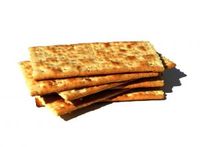
Crackers:
- I haven't seen any crackers yet that I think are all that great. None of them will have proper grain preparation (soaked, sprouted, etc.). Many have bad oils or trans fats or unnecessary sugar or preservatives or are high in salt (salt is okay if it's sea salt, but not the highly processed table salt in most products). As well, most are made with white flour.
- There are a few that are multigrain or stone ground whole wheat, etc. These are somewhat better options if your family really can't give up crackers. Another option is to make your own. I don't do it often, but they're really yummy.
- I used to think that rice cakes were really great alternatives, until I read that the process by which the grains are puffed up is really not so great at all, and may even be toxic. There are differing views on this topic, but I would lean towards thinking that this makes sense, as these foods are definitely highly processed.
Cereals:
- Sadly, most cereals would fall under the same category of being puffed or highly processed, and are really quite difficult on our digestive system (which also means we're not getting much in the way of nutrition from them, if anything). Not to mention added sugars, coloring, preservatives (hmmm, funny how often all these words keep coming up!)
- Best bets for breakfast cereals are:
- Hot cereals, like Red River or oatmeal (stick with plain rolled oats rather than quick oats, or try steel cut or Irish oats for a chewier, less mushy oatmeal). We love ours with milk or cream, honey, cinnamon, fresh or dried fruit, etc.
- Muesli or granola (though these are not soaked), with yogurt to help improve digestion. With granola, be sure to watch out for hydrogenated oils and high sugar content, as well as sulphured dried fruits. A great option is to make your own (hat tip to Lindsay for this recipe).
- If you must do cold cereal occasionally, a brand like Kashi has pretty decent ingredients (though there's some soy, and some brands are definitely puffed). There may be other brands, but I'm a bit out of the loop as far as cereals go, since we don't eat it anymore.
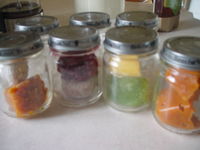
Baby Food:
- Quite simply, it's not necessary! Making baby food is so completely easy and feasible, there's no reason to buy it (for a fortune, I might add) and when it is so much fresher and more nourishing when you make it yourself. Here's my photo tutorial for how I make cubes to freeze for convenience.
- Other than the cubes, I use a handheld stick blender to quickly whiz up a portion of what I've made for our meal to give to the baby (especially now that he eats mixed foods like stews and soups). Foods like sweet potatoes and bananas can be easily mashed with a fork. Applesauce is simple to make and either freeze or can yourself. Avocados are the ultimate convenience food for going out. Grains can be soaked overnight, then cooked and blended up, and stored in the fridge for a week. I take out a small portion in the morning to reheat. Scrambled eggs are quick and simple, as is a bowl of plain yogurt. It doesn't take long to get the hang of preparing simple, nutritious foods for your baby in your own kitchen!
Other Grains:
- Brown Rice– there are so many great varieties out there, and this is such an easy healthy food to buy at any grocery store! If you're trying to adjust to brown rice, try basmati brown for a nice intro.
- Millet– Some bulk sections carry millet, and this extremely nutritious grain makes a good rice alternative or a hot breakfast cereal. It can also be ground to use for baking.
- Barley– Look for hulled barley if you can find it. Otherwise, you can use pot barely, for adding to soups or stews, to make a really amazing risotto, to add to casseroles or in grain salads.
- Quinoa– Most stores don't carry it, but I have sometimes found it in the bulk section. Check and see if it's available where you shop! This is another incredible alternative grain, that also works well instead of rice. My husband loves it!
Whew… there was more to say than I thought! I apologize for the length, but I hope that helps to give you a better idea of what other nutritious foods are available in a regular grocery store, how to use them and how to choose between different items.
Does this freak you out? Does it sound like you can't eat anything that you usually eat? Which items are the hardest to give up or do you find the most difficult to find?
Next week, I'm excited to compile for you a post full of info and links to fantastic sources of high quality, often local foods, beyond your grocery store! If you have any resources you'd like to pass on to me (farmer's markets, meat shops or delis, farmers selling grass fed meat products, CSA's, etc.) please email me at keeperofthehome (at) canada (dot) com, and I would love to include your information as well as give a little link love 🙂

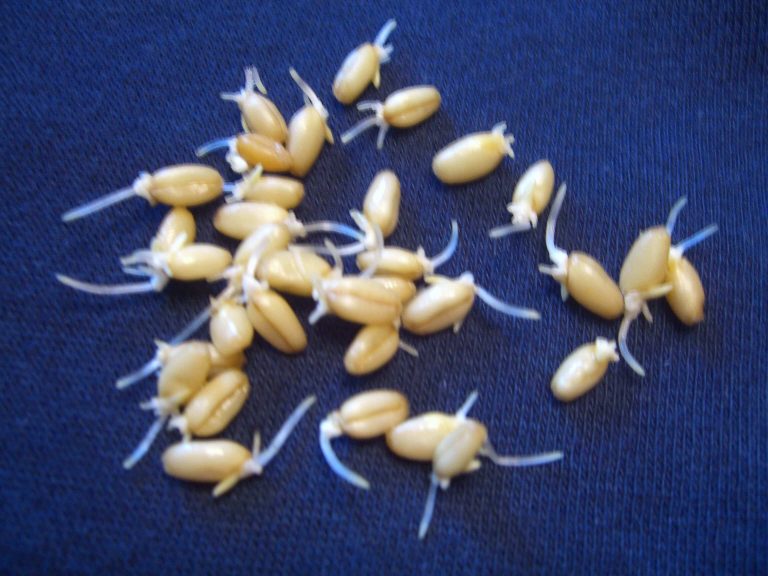


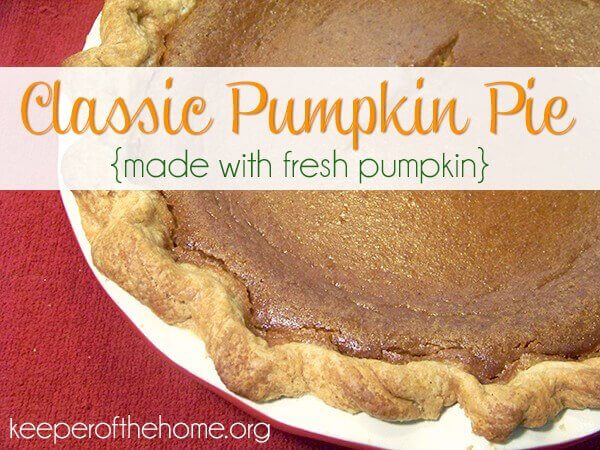
Thanks for a really thorough and great post. I’ll keep it around for reference.
I’m pretty clueless in a lot of ways, and don’t know why sulfites are bad (I assume they contain sulfur — why is sulfur bad?).
Amy, sulphites should be avoided because they destroy thiamine (Vit B1) and also diminish folic acid in the foods that they are in. As well, they cause a sensitive reaction in many people, including headaches, bowel/digestive troubles, rashes, behavior disturbances and can severely affect asthmatics (there have even been quite a few cases of asthmatics dying from accidentally eating sulphites).
Here’s a link to much more detailed info on the topic:
http://www.fedupwithfoodadditives.info/factsheets/Factsulphites.htm
What an informative post, thanks for all the work you put into this! It means taking a fresh look at how we shop – which is very challenging, especially as we are spending a year in my husband’s native Caribbean. Food is already about 40% more expensive thank back home in the UK and healthy eating is definitely not on their list of priorities here! On the good side though, my parents-in-law grow lots of local fruit and veg, which I am learning to cook with, and there are coconuts in abundance!
Do you know of any specifics about which brands of canned foods do NOT contain BPA? I noticed recently in my co-op catalogue about Eden canned beans being BPA free, but I don’t know about their other products. I don’t normally buy any canned products at all other than tomatoes, but I canned my own this summer and won’t have to use the store bought cans. Normally I soak and cook dried beans but I like to have a few cans of things around for emergency use like when I am sick or something. Any other brands you know of specifically? I was told that only cans with that white lining have BPA. Not sure if that is true. Some cans do not have that.
My grocery store is actually a fairly good place to find most things natural and health food related. I am amazed even in the past few years how it has gotten more into natural foods. However, I think its still the price that is the hardest thing to deal with.
The other thing that I find hard to deal with is that there is no way we can be, as a family, 100% perfect. We eat at other’s houses sometimes, or sometimes I find out that a product I thought was okay has an ingredient in it that isn’t and I didn’t notice. I know we aren’t striving for perfection but I am a perfectionist! Sometimes I find it hard to enjoy foods since I know they are less than ideal (if they are). I find it hard not to say something when my husband drinks pop at someone’s house, for example. He also likes packaged cereals and although he does eat other more healthy breakfasts, I find this is one area where I need to be submissive to his needs. Does that make sense? He allows me to (and enjoys!) practically everything I do that is naturally and health based, but there are a few things like that which I have to let slide. I think that and the money aspect (more expensive to eat better when on a tight budget) is hardest to deal with.
We recently inherited a huge, expensive food dehydrator. It is probably 30 years old, but as long as it works I don’t care! I’m so excited to be able to dry our own fruit! However, my cookbook strongly suggests using sulfur to preserve the texture and color. Their pictures of sulfur versus no sulfur make sulfur look very delicious!
But I figured it was a no-no, even before reading your link…. 🙂 Does anyone know of good resources and recipes about drying your own foods???
Canned tomatoes are one thing I’ve decided not to fuss about. Most veggies taste better fresh or frozen, but canned tomatoes are the hugest convenience…. I have no plans to give them up. 🙂
One thing I’ve amused myself with is how I can fill up my cart with whole foods, and have 2x as much food, probably 10x as much nutrition, and for 1/2 the price of the cart in front of me in line. We don’t eat very many organic items, so eating whole foods is wayyyyy cheaper than than eating from the middle aisles of the store. Who says you can’t eat at least moderately healthily on a tight budget?? 🙂
This doesn’t freak me out at all. But it would have 2 years ago as it is REALLY drastically different than what even “healthy” people eat today.
I keep canned tomatoes, coconut milk, and salmon (tuna has soy), sometimes beans. Love quinoa and millet around here as well as sunflower oil. Look up UDO’s 3-6-9 oil if you’re looking for a good blend of omegas (not for heating but has a great flavor for topping salads and porridge). Dried fruit and nuts for snacks – there is just NOTHING else non-homemade out there that’s ok! I only just discovered that the puffed grains (like in rice cakes – a food that I rely on HEAVILY for a quick kid snack – yikes!) aren’t good.
But what I’ve found it comes down to is that healthy eating TAKES TIME – plain and simple! SO glad that you post the info so that we can all be encouraged to take baby steps to better health….
Thank you, Stephanie, for such an informative and HELPFUL resource. We are definitely trying to do more outer aisle shopping. I am bookmarking this for future reference.
We love quinoa, too! The girls especially like it – such a neat and different texture.
Off-topic – have you covered food dyes in any previous posts? Both of my girls went NUTS last night after having jello instant pudding for dessert, and I checked the box and yep – Red 40 and other dyes. So now I’m really looking into this stuff. Just wondering if this is something you have covered!
Great post Stephanie. Thanks for the info. I agree with you on the baby food. I made most of my daughter’s baby food and it was easy and, I believe, much healthier. And less expensive. Thanks, too, for the kid’s snack ideas. I am always looking for something new to add to our list of approved snacks.
Thank you for this *thorough* post.
We are trying our hardest to eat whole foods. I have yet to ban Goldfish crackers or instant oatmeal due to their convenient yumminess. I also use artificial maple syrup and artificial vanilla due to the cost differential.
This is a great post, and for the most part I think my family is right on target. We eat lots of great stuff – and the stuff that’s not so great probably comprises about 10-20% of our food intake.
A question: my spouse and I both work outside the home. Most of the time we take leftovers for lunch but I like to keep coldcuts on hand for sandwiches. Most have sulfites. This weekend, I read an article in the Toronto Star called:
The real enemy? Corn
As a recession looms and junk profits boom, a study sheds new light on what makes us fat
You can find it here:
http://www.thestar.com/article/537391 (not sure how long it’ll be here before it’s archived).
This weekend when I went shopping, several of the packages of cold cuts had corn syrup (or derivitives)in the ingredients.
Do you know of any coldcuts that are “safe” to eat? I like the convenience of them but maybe I’ll just have to start roasting meat and freezing it specifically for sandwiches.
LOVE YOUR SITE!
Ok seriously, I love you for this! Thanks!!! 🙂
Some excellent advice here! I try to buy only whole foods for my family. I don’t like to feed my family processed foods. I believe eating too many processed foods leads to an increased risk for disease. Healthy oils, good wholesome proteins and fruits and veggies is a good plan to follow.
Thanks for all the great info. I do like to keep a few things on hand for snacks that the kids can take to church with them(I won’t let them eat the junk food they give to the other kids) and I find this can be difficult. I do sometimes make things but lately I have been buying Annies bunny crackers we love them and they are all natural and like 70-80% organic. All the granola bars I find are full of junk(soy) and I’ve yet to find a good recipe I like. Also I am having a hard time giving up my canola oil for one the price and 2 I don’t like the taste of olive oil in my baked goods I guess I just need to try and use coconut oil or butter all the time.
Stephanie — I love all these posts on nutrition and healthy eating — but I am SO overwhelmed of where to begin. I guess I must unlearn 45 years of grocery shopping and food preparation. I do some of the obvious — 100% pure juices — some organic grains sprinkled in here and there. I used to think Soy Milk was good but then I thought somewhere you might have said it isn’t. What would be your top three areas that I could begin to focus on? and/or eliminate from our diet. Thank you so much for all your time in this area!
Nola, to my knowledge, Eden Foods is the only company making BPA free canned foods. 🙁 And regarding being able to do this perfectly- I understand. I wish we could do it perfectly all the time, and it’s hard for me to eat out and not think about what I’m eating. I think you’re right on in submitting to your husband in those areas, and perhaps one day he will be willing to make a change (and perhaps not). Either way, we can’t expect to be able to do it all, but only do our best. 🙂
Lizzykristine, I’m with you on being able to eat cheaper than many people, with a whole foods diet! And as for dried foods, I don’t know of too many great resources. I have a little book called “Dry it- You’ll like it”, but I have a feeling it was self-published, as it doesn’t look professional. I make my dried fruit bars without sulfur, but I do add lemon juice to help maintain the color. It’s not as perfect looking as the stores, but it tastes great and my kids gobble them down.
Megan, I haven’t covered foods dyes before, but they definitely do cause hyperactivity, among other things, in kids. Maybe I’ll add that to a future post list! 🙂
Warrilever, Costco carries real vanilla for quite a bit less than most grocery stores.
Beatrice, thanks for the link. Yep, corn in processed foods (especially high fructose corn syrup) is a big deal! As for sandwich meats, a few readers suggested brands in the comments of this post: https://keeperofthehome.org/2008/10/nutritional-foundations–making-the-best-of-the-regular-grocery-store-part-5.html
I buy mine from a small local deli- try asking around if anyone knows of a local deli that makes stuff like this. I also use leftover meats, or make salmon salad.
Rebekah, butter and coconut oil taste much (much!) better in baking than olive oil does. Plus, olive oil shouldn’t be heated too much, so they’re better options health wise.
Judy, I love that you are working to change your diet- huge hugs to you! 🙂 Ok, I will choose my top three areas and write a simple, un-overwhelming post about them, just because you asked!
Thanks so much for responding to me Stephanie. I missed that post and will read it asap!
Bea
Thank you very much for helping spread the great word about coconut oil and for these wonderful ways this amazing tropical oil can be used.
Yes, if you can find organic or virgin coconut oil, that would be best. But if you prefer the scentless and/or tasteless kind, refined varieties are always available. But then again, unrefined or pure coconut oil is always best, I believe.
Just my two cents. Take care.
Cheers,
CoconutOilGuy
http://www.coconut-oil-central.com
Your Drugstore in a Bottle